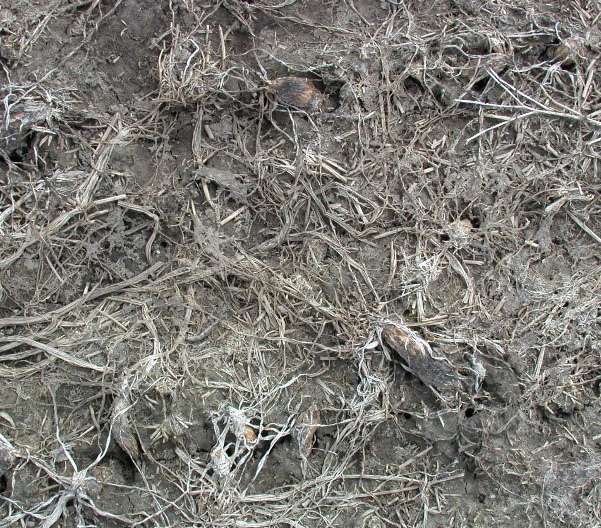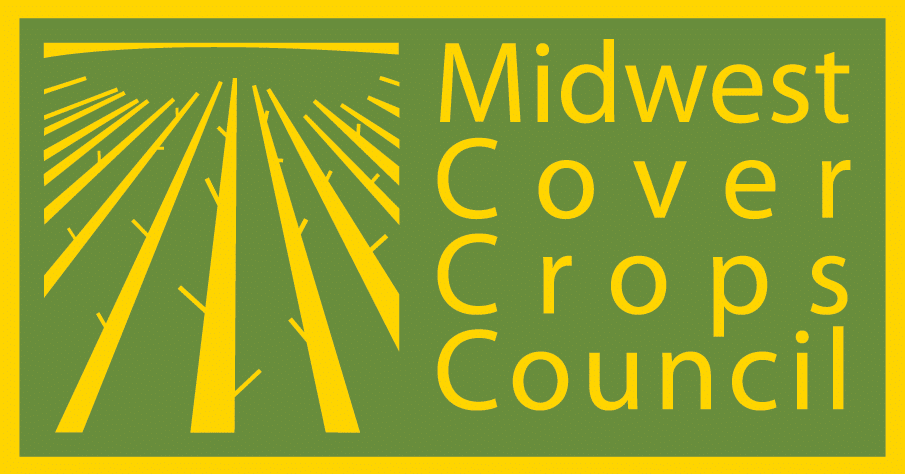Midwest Cover Crops Council (MCCC-128)
University of Guelph (SAG-FS-21-003)
This publication is intended to provide a starting point for farmers who are new to growing cover crops. With experience, many farmers fine-tune the use of cover crops for their systems.
Introduction
This recipe provides an introductory approach to integrating a cover crop mix of oats and radish after wheat harvest going to corn or soybean the next year. Since both oat and radish can be sown after wheat harvest and usually winter-kill, it is a low-risk mix that will help control tough perennial weeds, minimize erosion, build soil structure, reduce compaction, and add some extra diversity to your rotation.
Planning and Preparation
- Planning—Keep it simple. Start small on one field. Be timely. Prioritize cover crop management based on your goals. Fine-tune the recipe for your needs over time.
- Wheat variety and planting—No modifications to wheat crop are required for the successful use of cover crops after wheat harvest.
- Residual wheat herbicides—Oats and radish are tolerant of most herbicides applied to the wheat crop in-season before flag leaf emergence.
- Seed purchase—Seed supplies and prices can vary depending on the time of year; it is good practice to order seed early (before wheat harvest). The Ontario Ministry of Agriculture, Food and Rural Affairs (OMAFRA) has compiled a list of reputable cover crop seed suppliers (see Resources).
Summer/Fall Work
- Wheat harvest—Ensure that straw and chaff are spread evenly. If residue levels are high or variable, consider removing the straw or using light tillage to improve seed-to-soil contact for the cover crop. However, light tillage will tend to synchronize volunteer wheat and cover crop emergence. Weeds can be sprayed after wheat harvest but before cover crop emergence.
- Timing of planting—Plant the oat-radish mix up to late August after wheat harvest. Planting radish prior to August is not recommended as it may result in flowering and seed production instead of quick coverage and biomass accumulation.
- Planting method—An oat-radish cover crop can be drilled at a depth of 0.50–0.75 inch or broadcast with light incorporation. If broadcasting, adjust to a half lap for spinner spreaders or use an airflow spreader to ensure even distribution of seeds. An oat-radish cover crop can be mixed and applied with P and K fertilizer for the following corn or soybean crop, and then lightly incorporated.
- Seeding rate of oat and radish—Mix seeds prior to planting. For oat, use 30–60 lbs/acre. Use the higher end of that range if manure application and/or erosion control are your goals; use the lower end of that range if you are hoping to build soil structure or have land covered. Radish should be seeded at no more than 2 lbs/acre if drilling and 2–3 lbs/acre if broadcasting.
- Tillage or no-tillage—Full-width tillage is not necessary and minimizes the benefits of soil cover over the winter. By the spring, there is typically very little residue (Figure 1).
- Fertility or liming—Use a current soil test (no older than four years) to determine lime or nutrient requirements for the next year’s crop. Lime and fertilizers can be applied at the same time as seeding to reduce costs. Lime will need to be incorporated more deeply.
- Manure—Up to 4 tonnes/acre of solid manure or litter can be surface-broadcast to growing oats and radish provided it is evenly distributed; otherwise it should be done prior to seeding. If injecting manure, low-disturbance injectors are available that will minimize damage to oats and radish. See Use and Management of Manure and Other Organic and/or Prescribed Materials in Resources for more information about recommended practices in Ontario.

Spring Work
- Fertilizer—No modifications to a typical fertilizer program are required for planting corn or soybeans after an oat-radish cover crop mix.
- Termination—Both oats and radish should winter-kill. However, mild winters and good snow cover sometimes allow overwintering of radish. If this occurs, it is easily terminated with typical pre-plant herbicide application for broadleaf weeds. Volunteer winter wheat may also be present and require termination.
- Corn or soybean planting—It is usually best to no-till cash crops into the dead/dry or standing oat-radish residue. Almost all modern planters and drills are fully capable of planting corn into the expected low residues from an oat-radish mix. If there is a lot of residue, soils may be slower to dry and warm, which may delay planting. Check planting depth and seed furrow closure shortly after beginning to plant into the cover crop residue (Figure 1) as some adjustments may be needed. Based on scouting and field history, consider using treated seed to control insects and diseases, but oat-radish mix is not expected to increase pest pressure.
- Scouting—After corn or soybean planting, scout for crop emergence and population. Additionally, scout for weeds since cover crop residue can delay the emergence of annual weeds, which may delay the application of any contact post-emergence herbicides.
Resources
Best Management Practices: Winter Cover Crops (OMAFRA)
Agronomy Guide for Field Crops (OMAFRA publication 811)
Cover Crop Selector Tool —available from Midwest Cover Crops Council
Use and Management of Manure and Other Organic and/or Prescribed Materials (Ontario Soil and Crop Improvement Association Infosheet #17)
Authors
Jordan Grigg, Cameron Ogilvie, and Laura Van Eerd, University of Guelph; and Anne Verhallen, OMAFRA (Note: This publication was adapted with consent from MCCC under a joint project to produce customized introductory guidance about cover crops for all member states/provinces.)
Reviewers and Contributors
Joanna Follings, OMAFRA; David Hooker, University of Guelph; Tatianna Lozier, Upper Thames River Conservation Authority; Anne Vanasse, Université Laval; Marty Vermey, Grain Farmers of Ontario
The Midwest Cover Crops Council (midwestcovercrops.org) aims to facilitate widespread adoption of cover crops throughout the U.S. Midwest and Ontario by providing educational/outreach resources and programs, conducting new research, and communicating about cover crops to the public.
Funding for this project was provided by McKnight Foundation.
July 2021
The U.S. Department of Agriculture (USDA) prohibits discrimination in all its programs and activities on the basis of race, color, national origin, age, disability, and where applicable, sex, marital status, familial status, parental status, religion, sexual orientation, genetic information, political beliefs, reprisal, or because all or a part of an individual’s income is derived from any public assistance program. (Not all prohibited bases apply to all programs.) Persons with disabilities who require alternative means for communication of program information (Braille, large print, audiotape, etc.) should contact USDA’s TARGET Center at (202) 720-2600 (voice and TDD). To file a complaint of discrimination write to USDA, Director, Office of Civil Rights, 1400 Independence Avenue, S.W., Washington, D.C. 20250-9410 or call (800) 795-3272 (voice) or (202) 720-6382 (TDD). USDA is an equal opportunity provider and employer. ©2021 by MCCC. All rights reserved.
